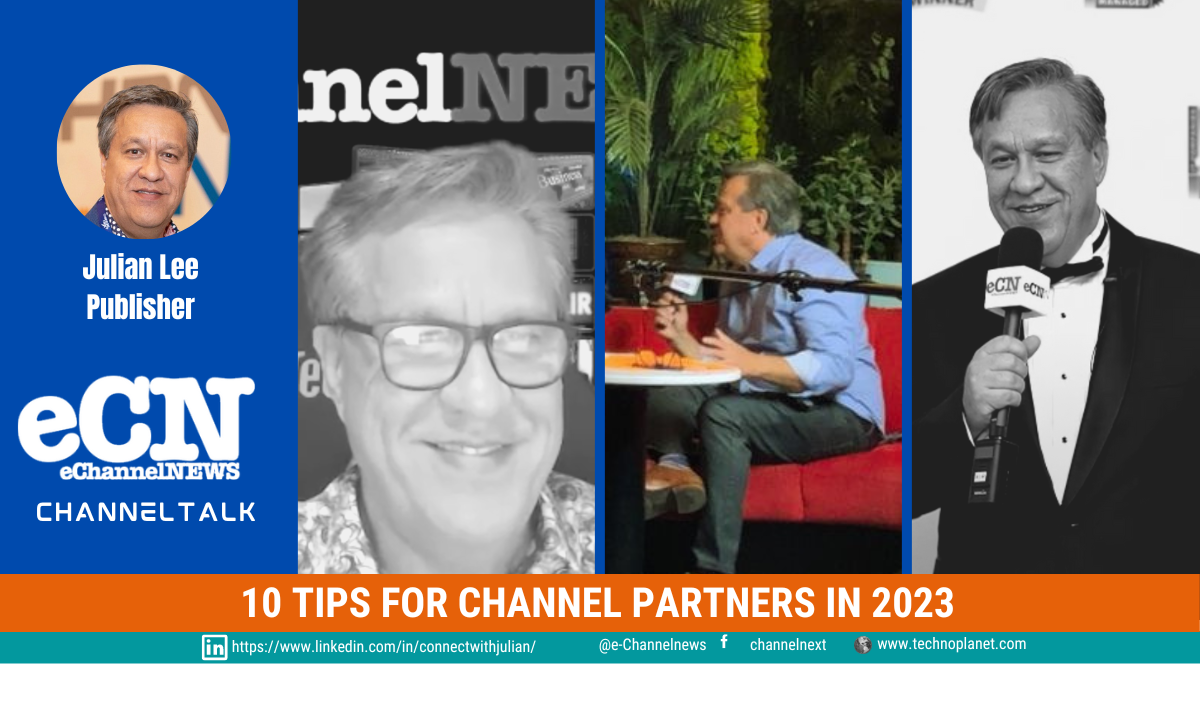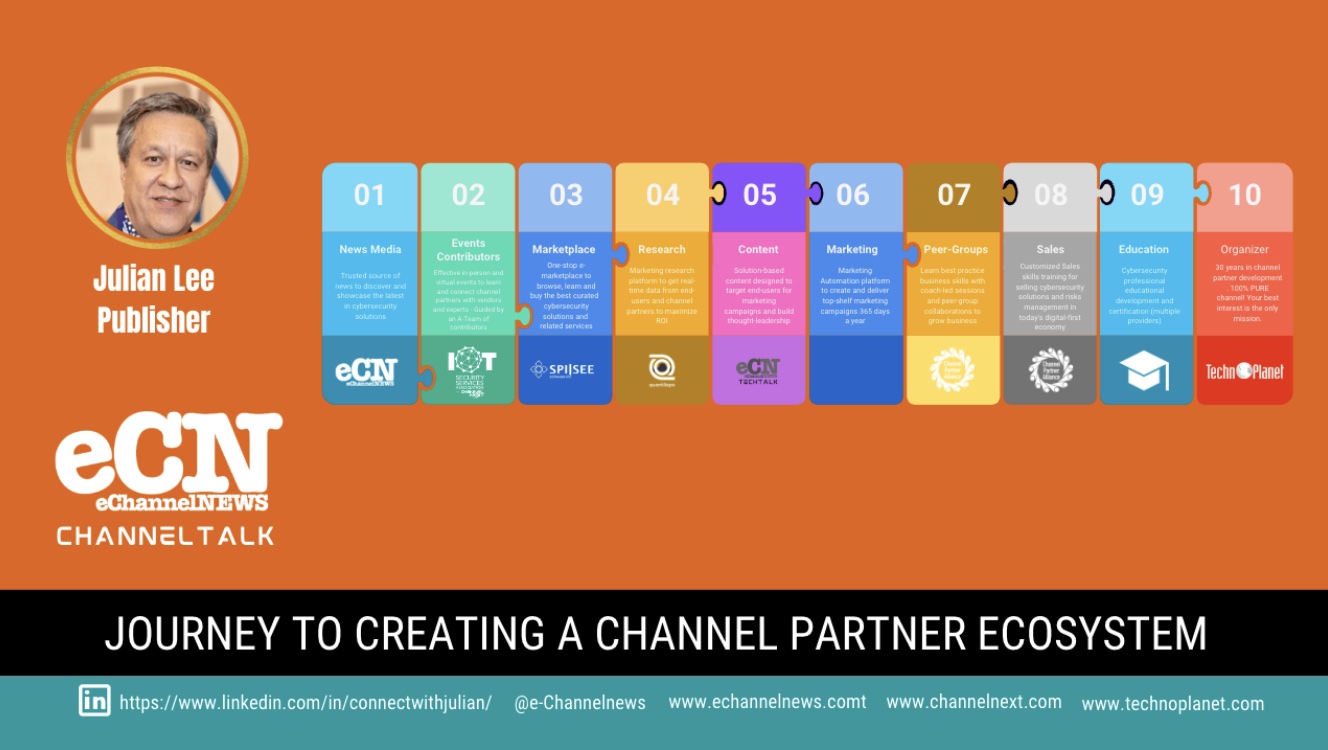
Sounds like a great goal, but how exactly could it be achieved? It’s a challenge that we have been tackling over many years. It all began when more than the usual amount of VARs and MSPs started to tell us just how badly their businesses were doing. It was around global depression of 2008 but it continued to accelerate over the following years. We did not know exactly what was going on, but it was becoming clear that something was happening and it was no longer business as usual in the channel.
At first, it seemed like many were simply not prepared to handle a market downturn. However, the transition into Managed Services and Cloud was also starting to take off. Other factors were also converging around the same time that produced the perfect storm to compound the problem. Data has since shown that about one-third of the traditional channel has disappeared since this time.
Beyond our core business of helping vendors to recruit and empower their partners, we have been offering an e-commerce platform to VARs so they can sell online. This got us into the infrastructure of their businesses. Over the years, many VARs asked us to recommend other tools to run their businesses, especially as they were transitioning into an MSP model (ERP. RMM, PSA, CRM etc.). Back then, we simply referred them to a list of solutions that we saw other VARs and MSPs were using.
They wanted more but we really did not have a better answer. We knew that if we were ever going to have a chance of solving this problem properly, we had to first understand their problem at the DNA level.
It took months of researching and interviewing and analyzing the data. As we started to slowly peel back the onion, we uncovered the core issues that were causing the decline. A pattern became very clear.
Here are just a 20 factors that we discovered to be fueling their situation:
- Declining margins from traditional sales
- Generating more sales to compensate for the shortfall in profits
- Adjusting cost and infrastructure to maintain support the new business reality
- Transition headaches from “Traditional to Managed Services”
- Implementing the new culture of Managed Services
- Investing and implementing new processes and tools for Managed Services
- Convincing clients to convert billing from transnational to recurring (including Cloud)
- Realistic and sustainable marketing to generate more qualified leads
- Keeping their sales people motivated and satisfied
- Hiring qualified people who will stay
- Buying better (cost, process and time)
- Expanding with the right product portfolio (particularly in recurring revenues)
- Leadership and management practices were deficient
- Sales process was not repeatable or predictable
- Sales people were challenged to switch from CAPEX to OPEX
- Vendor relationships were not deep (margins left on the table)
- Sales forecasting was more like a feeling instead of process-based
- Tools that they were using were a wrong fit and others were grossly underutilized
- Focus was still on exploiting the traditional IT business model
- They were increasingly getting out of sync with the newly forming buying habits of the end-users
There were a lot more factors that we identified to help us see the big picture. The bottom line is that they needed a lot more than a RMM or PSA solution to remain relevant in the future. They actually needed to perform well in about 30 areas of their business. Failure to do so could risk the survival of their business.
On top of this, they had to deal with the changing vendor models. Some vendors were actually competing directly with them. And, as if that was not enough, here comes the avalanche of new competitors (ISV, Cloud/SaaS, Marketing, Accountants etc) entering the channel to compete and disrupt.
The attacks to the channel are coming from every angle, including from within. They were also wrestling with themselves to decide if they should stay and fight or get out. Many sold or merged. For older owners, they were weighing their retirement plans and timing to decide what was best for them.
We continued to listen to countless stories and slowly started the work to figure out how we could help really them. Over several years, we eventually started to get it right. Today, we do have a full solution, but always fine-tuning as we continue to learn. We are very confident that we can help just about any VAR or MSP – regardless of size or circumstance.
Here is how we are helping the VARs and MSPs solve these problems:
- Learn @ www.varcoach.com – If you are not sure what to do, just start reading, watching and digesting relevant content that can help your business. There are other great sources of content that we can recommend. Eventually, you should find a few ideas that you can use to improve something that will benefit your business. Do the very best that you can do to fix whatever you can on your own. I know it is not easy, but it is possible. This also does not coast you anything, except for your time.Test @ www.bestmanageditcompanies.com – You need to know what you do not know. Forget the fact that this assessment test will give you a score to help you gauge your strengths and weaknesses in every area of best business practices. Just as important, it will also push you to start asking yourself the right questions. Dig deep and be honest with yourself to answer these questions for yourself. You will be amazed what a human mind can do when forced to think with the right questions. Things that were once hidden become visible and clarity started to set in like never before. This assessment is free so it will only cost you some time and effort.Find @ www.varofficesuite.com – You need to run your business with the right tools for the size and scope of your company. You do need the right-size shoe or you will get blisters! We have compiled most of the best tools that the most successful VARs and MSPs are using (They told us!). In the process, we also discovered that many were using the wrong tools or grossly underutilizing the tools. With this knowledge, we were finally able to be a good matchmaker between the VARs/MSPs and the tools. Our recommendations can certainly help you weed out the wrong tools, save you time, energy and money. More importantly, it can help you get the right tools to run your business! Before we recommend anything, you need to take the assessment test and let us know what you are using currently and what are your gaps. We need to understand your situation. Depending on what resources we have to use, this will cost you some money. However, if you are only looking for a specific tool, you can complete the contact form on the web site and we can give you a best guess recommendation for free. You will need to see demos from the recommended vendors to make your final decision.Improve @ www.varmastermind.com – Sometimes you just cannot do it alone. If you do not know what is a Mastermind group, then check it out. While some of it is about using the right tools, it is mostly about leadership, business practices and support. When you collaborate with a group of 8 like-minded people, you will be amazed how you can solve problems. When you add 6 coaches into the equation, the results are exponential. It some ways it feels like having a powerful board of directors and business advisors, without the high cost. This is an accumulation of the best of everything that we can do to help you. However, we can currently only do Mastermind groups with 300 partners and in Canada, USA and UK. If you are interested, we are taking applications for 2018 and membership fees range from $99 to $997 per month. It’s not for everyone as you will be required to work and push yourself like never before – no pain, no gain. But, we promise it will be an enjoyable experience that may also change your life along the way!Meet @ www.vartrends.com – Virtual is good, talking is nice, but nothing beets face-to-face live contact. Come as a skeptic. Come kick the tires. Talk to everyone. Come with your hardest questions. Put us under a microscope. See if we can actually help you. We like to say “please hear us now and believe us later”. Meet and listen to our business coaches. Gauge if or how they can help you. Get to know us and the other attendees. You are welcome to be part of our channel community. See how we can help you to gain strength by understanding and conquering your weaknesses in a great environment. Our mission is helping you to succeed. Some events are still free, but in 2018, all of our events will cost fee to attend as we switch from a vendor support model and to independent business content. It is the only way to bring you the high level of educational content that you need.
And, there is much more to come! We are introducing more game-changing solutions that will help VARs and MSPs to accelerate their success. Here are just 5…
- A new e-commerce platform that will help them to market and sell any Cloud/SaaS solution online, including provisioning.
- A marketing automation platform with content that will help them to prospect digitally and socially, 365 days a year.
- A Cloud ERP solution customized specifically for their business model with business intelligence to help them make better decisions.
- Planning a better retirement strategy with their IT business.
- Mergers and acquisitions connector.
“Seems like we have become a VAR for VARs”
If you are a VAR or MSP looking to build a bigger, better, stronger and smarter business, then consider the
VARMastermind trial membership ! You will experience exactly how you will benefit.If you are a vendor looking to help your partners, then explore the Elite 300 Mastermind Channel Partner Group to learn what it does. If you like what you see, simply tell your partners to check it out. See how we can help you energize your channel partners!





